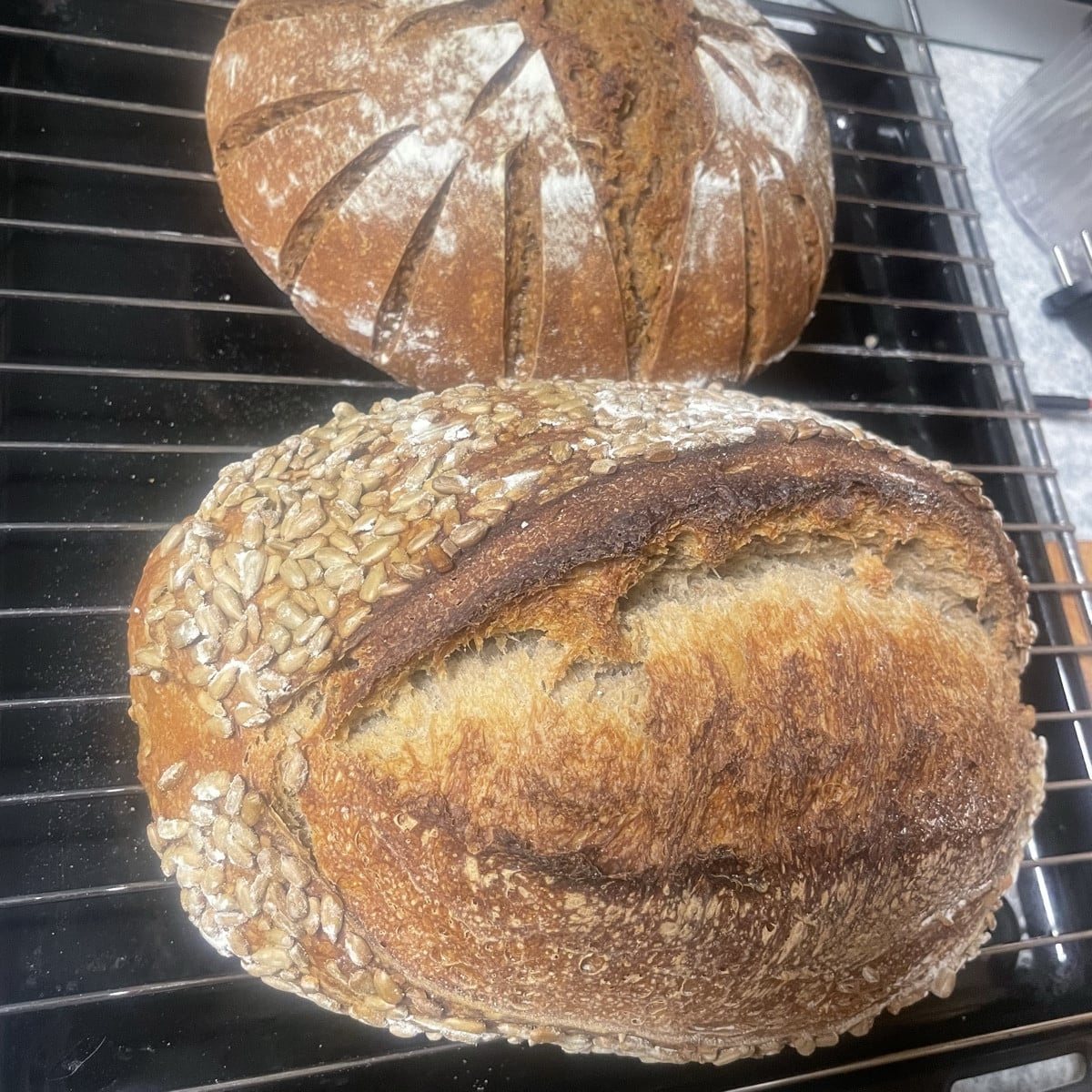
Tini's Tomato Bed
As part of our themed weeks on mixed cultivation, we present five example beds that you can use as inspiration for your own mixed cultivation. In this summer vegetable patch, tomatoes grow together with celeriac, bush beans and herbs.
Tini (Kassiolino) gardens in her garden by the house and also on a piece of land. When you enter her garden, you feel like you're in a little oasis. Countless vegetables and flowers seem to grow wildly in a relatively small area. There are lots of little nooks and crannies to discover and you can find something edible in every corner of the garden. Be it strawberries, berry bushes, tea herbs or vegetables. Around the house and in the front garden there are pots with countless tomato and bell pepper plants and in summer the fruits compete with the flowers. There are lots of bees, bumblebees and butterflies and the colorful flock of birds is also a sight to behold. If you have a classic vegetable garden in mind, you might think "what a mess" in Tini's garden. But every plant has its place and even if it looks like a wild jumble at first glance, everything has its purpose, complements and supports each other and creates endless variety.

In addition to tomatoes, Tini's tomato patch also grows bush beans, e.g. 'Marona', and celery, e.g. 'Alba'. The whole thing is rounded off with herbs such as basil and savory. In the example, three different tomato varieties were used: the beefsteak tomato 'Vivagrande' (an outdoor tomato with blight resistance), the yellow cocktail tomato 'Sunviva' and the classic red cocktail tomato 'Zuckertraube'. As low-growing planting partners, you can place the bush beans in a circle around the tomatoes (about 5 - 6 per plant). The tomatoes can also be placed right next to each other, they are self-compatible and like their own scent. However, if you want to effectively prevent blight, leave larger gaps between the individual tomato plants. This ensures that the crop is better aerated. The harmful fungus(Phytophthora infestans) is mainly transmitted from the soil to the plant via rain and irrigation water. The beans and herbs therefore act as a barrier and reduce the spread of Phytophthora . The bush bean not only serves as a barrier and ground cover, as a legume it also accumulates nitrogen in the soil through its symbiosis with nodule bacteria. This makes it an ideal companion for the heavy feeder tomatoes. As an additional pest defense, you can sow savory to keep the black bean aphid away. Lemon basil or classic basil varieties are also a good addition next to your tomato plants.
Would you like to receive helpful gardening tips all year round and plan your own beds optimally? Then register here or download the Fryd app for Android or iOS.
Fryd - your digital bed planner

Annabell
Annabell is studying agricultural biology at the University of Hohenheim. She also enjoys gardening in her private life, spends a lot of time in nature and loves to be creative.
Learn MoreCurrent Topics in the Community

Liked 11 times
Since I enjoy drawing, I also capture some of my plants as botanical drawings. Incidentally, this is also a great winter activity.
Show 3 answers
Liked 7 times
In the fall, everything was still so beautifully colorful, and now winter has the garden firmly in its grip. Everything is white, with the only splashes of color coming from the birds at the feeding station.

Liked 12 times
It keeps getting better 😍. Sunflower is a livito madre & gold wheat bread, the other is pure emmer with rye sourdough.
Show 10 answersPopular Articles

Overwintering Parsley: How to Do It Successfully

How to Grow Lettuce in Winter: Varieties, Sowing, Harvesting

Growing Sage Plant: Tips for Sowing and Harvesting

What Herbs Can Be Planted Together?

Create & Design a Permaculture Garden

Overwintering Plants: Tubs, Pots and Raised Beds

Pruning, Fertilizing & Propagating Currants: Care Tips

Pruning Raspberries: How to Do It

Vegetable Garden With Greenhouse: How to Use Greenhouse Effect

Winterizing Beds and the Garden: How to Do It